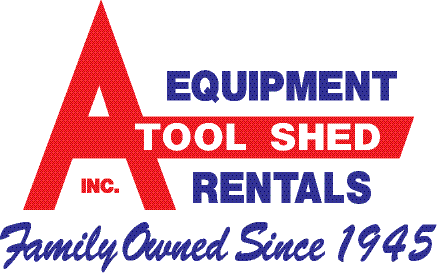-
How to Use Sandpaper Properly
Sandpaper is used to prep surfaces for painting and staining. If you’ve never used sandpaper before, this important tool can be a little trickier than it may seem. This video will show you techniques that will help.
Don’t try to use sandpaper sheets flat on surfaces with just your hand. Instead, wrap the sandpaper around a block of wood or other handheld implement and staple it in place. This will help you get the traction you need to sand effectively. Be sure to choose coarse sandpaper for smoothing wood and fine sandpaper for painted surfaces.
Whatever project you need to complete, A Tool Shed has all of the tools and rental equipment you need to get the job done. To learn more about tools for rent in San Jose, please call (800) 286-6574.
-
How to Use a Metal Detector
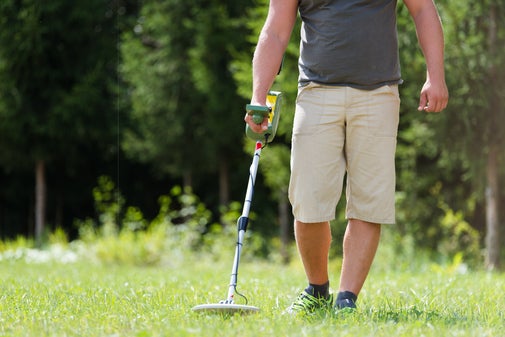
Metal detectors can be used on building sites to find underground pipes, and they are also popular with people who enjoy treasure hunting. If you have a need to use a metal detector as part of a work project or you simply want to try one out for treasure hunting hobby, you can rent this tool easily and affordably. Is using a metal detector new to you? These tips will help you get the most out of your equipment rental.
Practice Your Sweeping Technique
Getting your sweep right is critical to using your metal detector effectively. The detector itself needs to be close enough to the ground to actually detect buried metal, but it can’t be so close that it touches the surface. Many people have a tendency to sweep back and forth hurriedly, in short swings. However, this technique won’t give the detector enough to time to thoroughly penetrate and scan the surface. Instead, sweep slowly, in long back and forth swings, to methodically cover the area.
Test Your Detector
It can helpful to test your metal detector before you start using it. Bury a few coins and nails, and then see if you can find them again with the detector. Doing this will help you get used to the sounds the detector makes when it finds something and will give you a feel to how strong the detector’s sensors are. Be sure to use a few different kinds of metal, so you can see if the detector is better at finding some kinds than others.
Be Methodic with Your Search
When you search an area with your metal detector, take a methodic approach. Work slowly and deliberately, finishing your search of one point before moving on the to next. Using this kind of approach will help to ensure that you thoroughly search the area and don’t leave any parts uncovered.
If you need a metal detector for work or hobby use, contact A Tool Shed. We offer flexible and affordable equipment rentals in San Jose, including easy-to-use metal detectors. For more information, call (800) 286-6574.
-
What’s a Scissor Lift and Why Would I Need One?
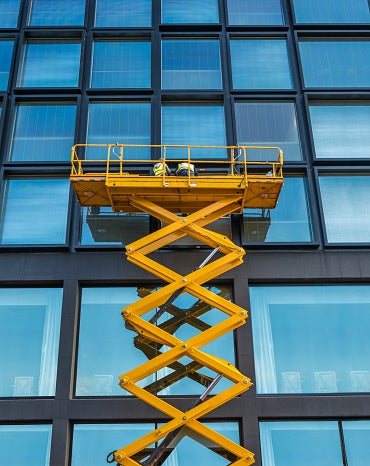
Scissor lifts, or aerial work platforms, are essential for safely working on projects at different heights. They have a crisscrossed mechanical lifting mechanism that allows workers to be elevated simply and safely. Thanks to the availability of scissor lifts as rental equipment, you don’t have to worry about purchasing one for short- or long-term jobs.
You can make use of a scissor lift at any job site at which you need an elevated platform. They are ideal replacements for ladders and scaffolding, particularly for jobs where your elevated platform needs to be used in multiple locations. With a scissor lift, you don’t have to break down and rebuild the entire platform every time you have to move it. It’s the perfect tool for window washing, tree trimming, construction, and even in factories or warehouses where you need to move items on high shelves.
A Tool Shed offers a variety of aerial work platforms as part of our selection of rental equipment in San Jose. To find out more about renting equipment, call (800) 286-6574.
-
Understanding R-Value
If your energy bills just keep climbing, you may want to take a look at your insulation. R-value is the measure by which the effectiveness of your insulation is determined. If your home’s R-value is insufficient, you can rent tools to improve it.
Watch this video to learn about insulation and R-values. R-value refers to how much resistance your insulation has to heat loss. The higher the R-value, the less heat loss you will experience. The specific R-value that is right for your home will depend on the climate in which you live.
A Tool Shed offers a range of equipment rentals to help with insulation installation and all of the other jobs you want to do around your home. For more information about renting tools in San Jose, call (800) 286-6574.
-
Welding Basics for Beginners
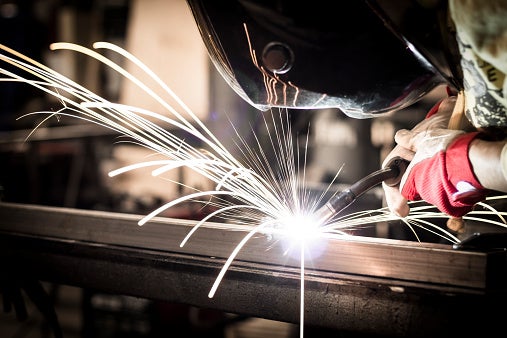
Welding takes practice, so beginners can often benefit from tips to make the job easier to complete. The more frequently you practice welding, the more comfortable you will become with all parts of the process. If you’re a beginning welder in search of some ways to make better use of your tool rentals, these basic guidelines will help.
Always Wear Safety Gear
Wearing safety gear is crucial for all welders, and it is even more important when you are inexperienced and more prone to experiencing accidents. Leather gloves and a welding helmet with eye protection are essential for preventing burns and damage to your eyes from the welding flame. You should also wear long sleeves to weld, as you can get sunburned from the flame as well. Beginning welders sometimes feel like the safety equipment seems excessive, but there is a reason you never see experienced welders skimping on safety gear. All of it is necessary for protecting yourself from serious injury.
Properly Prepare the Surface
Before you begin welding, the surface on which you will be working should be thoroughly cleaned with a wire brush and metal cleanser. You should also sand it, if necessary. Once the surface has been cleaned, apply a welding primer. The primer will prevent the surrounding areas from becoming rusted or corroded as a result of the welding.
Work with the Right Kind of Wire
Using the wrong welding wire can lead to weak welds or holes in the metal surface. If the metal on which you are working is thin, you should use a thin wire to avoid damaging the surface. For thick metal, use a thick wire that is strong enough for the job. Choose a wire that is made from the same kind of metal as the surface on which you are working.
Get all of the equipment you need for a safe and effective welding job at A Tool Shed. We offer a wide selection of equipment rentals in San Jose for both large and small jobs. To learn more information or to reserve your rental, call (800) 286-6574.
-
How to Remove an Interior Wall
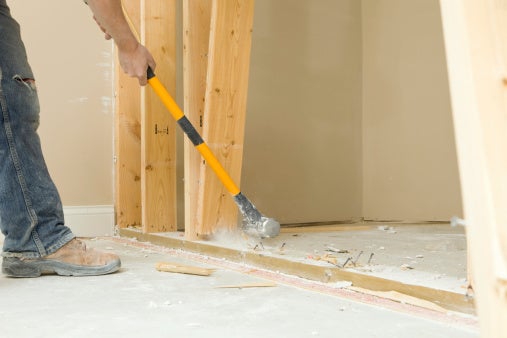
The process of removing an interior wall isn’t as complicated as you may think, as long as it is not load bearing. With the right tools and preparation, you can remove the wall in just a few steps. Be sure to gather the tools you will need before you begin, including any equipment rentals, so you don’t get stuck in the middle of the job. Follow these steps to fully remove an interior wall in your home.
Prepare the Wall
The first step is to prepare the wall for work. Start by shutting off the circuit breakers and removing all of the electrical plates and outlets. Shut off the water main if there are pipes in the wall. You will also need to remove any doors, trim, and baseboards that are on the wall. A flat bar is handy for removing the trim and baseboards. The last step in prepping the wall is to cut the paint and caulk between the wall and the ceiling. You should also make cuts between the wall and any adjacent walls you will not be removing. These cuts will prevent you from inadvertently removing drywall from the walls and ceiling you are leaving in place.
Cut into the Drywall
To start working on your drywall, first you have to punch holes in it using a framing hammer. Swing the hammer gently—it should easily break through the surface. If it doesn’t, then you are likely hitting a stud and need to move to a different portion of the wall. Next, use a reciprocating saw to cut the drywall. Remove it in sections until the drywall on both sides of the wall is completely gone.
Remove the Studs
The studs and beams should be clearly exposed now. Cut through each stud, and then slowly remove each one. Repeat the process until you have removed all of the studs and any leftover debris.
From framer hammers to reciprocating saws, A Tool Shed has all of the equipment rentals you need for every home improvement project. Call us today at (800) 286-6574 to rent tools in San Jose.
-
The Complete Guide to Polishing Your Car

If you want to keep your car looking as shiny as it did the day you drove it off the lot, then you have to polish it. Although car detailing companies do polishing as part of their services, you can do the same thing at home for much less by borrowing a polisher from an equipment rental company. Polishing your car once a year will keep it looking its best without compromising your paint job. Here is what you need to know to get the job done.
Wash and Rinse Your Car
Your car needs to be clean so that you can polish it. Choose a shaded area, and wash your car thoroughly. Rinse all of the soap off, but don’t dry it. It is best to wash your car by hand rather than running it through an automatic washer, which may not be as thorough and has a dry cycle.
Polish Panel by Panel
Before you start using the polisher, cover up any items nearby to protect them from spray from the tool. Be sure you are wearing clothing that can get dirty. Slightly dampen a polishing pod and apply it to the polisher. Put a polishing compound on one panel of your car—use enough of the compound to ensure that a moderate coating is in place. Turn the polisher onto medium speed and work on the panel, moving back and forth and being careful to avoid swirling or excessive pressure. Rinse the pad periodically to remove excess compound. Repeat the process on each panel of the car.
Wash and Wax
After you’re done polishing the car, wash it again, and this time, dry it completely. Wax the car using a foam wax pad, working the wax into the surface until there is only a haze left. Clean excess wax and polish from the windows using a microfiber cloth.
A Tool Shed offers car polishers among our large selection of equipment to rent in San Jose. To get your car looking as good as new, contact us today by calling (800) 286-6574 to reserve your tools at one of our seven area locations.
-
Are Popcorn Ceilings Outdated?
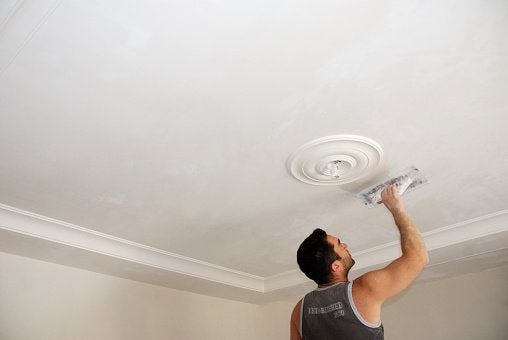
Popcorn ceilings—ceilings with bumpy textures—were once a popular home décor choice, but now that styles have changed, many homeowners are still left with this look overhead. Some people question whether popcorn ceilings are outdated—and some even wonder if they could be dangerous. Should you start looking into tools to smooth out your popcorn ceiling?
Some popcorn ceilings contain asbestos, which can be very dangerous when disturbed if not handled carefully. However, even if your ceilings don’t contain asbestos, popcorn ceilings are definitely past their prime in terms of style. If you plan to sell your home, renting equipment to get rid of your popcorn ceiling could be a smart investment.
A Tool Shed has a wide range of tool rental available, from drills to forklifts and everything in between. Start crossing items off your to-do list with out tool rentals in San Jose . To find out which of our seven locations is most convenient for you, call (800) 286-6574.
-
Getting the Most from Your New Smith Concrete Planer
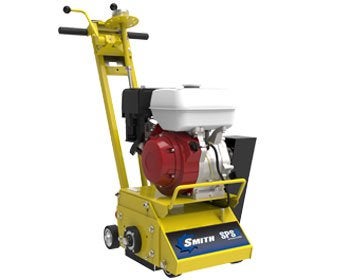
Smith Manufacturing is known for setting the gold standard in surface preparation equipment, including concrete scarifying and coating removal. If you’ve just purchased a new Smith concrete planer , you can look forward to many years of rugged dependability, thanks in part to its Honda engine. This all-purpose planer works well on both concrete and asphalt. Always read the owner’s manual, including the safety warnings, before operating new power equipment or equipment rentals.
Removing Substrate
Use the hand wheel and the cam lever to adjust the height of the cutter drum. Be careful to set the correct depth of the cut so that the cutters do not extend past the depth of the material to be removed. The drum assembly should not come into contact with the substrate. Otherwise, it’s possible that the shafts, drums, and other components will sustain premature wear and tear.
Creating Surface Patterns
A little practice with your new concrete planer is all that’s needed to figure out how to make desired surface patterns when removing substrate . Experiment with dialing the hand wheel up or down. Additionally, try positioning the planer in multiple directions. After a few hours, you’ll be able to create any pattern you wish, and remove substrate with ease.
Ceasing Work
Follow the correct order of operations to shut off the machine when you’re ready to take a break from work. First, use the cam lever or hand wheel to lift the drum above the substrate. Then, stop the machine at the engine. Finally, close the fuel cock. This will close the fuel supply.
Inspecting for Damage
Before and after each time you use your concrete planer, you should remove and inspect the drum assembly. Look specifically for signs of wear and tear, such as weld separation and hole elongation. After every 40 hours of use, you’ll need to replace the cutter shafts and drum bushings. Order another cutter drum if you notice elongation of the drum’s center holes.
Smith Manufacturing’s SPS 8” concrete planer is just one of the many tools and equipment you’ll find at A Tool Shed . We’re well-known among area homeowners and contractors for our exceptional rates on power equipment rentals, but we also offer new and used equipment for sale in San Jose. Call (800) 286-6574.
-
Your Tool Rental Checklist for Revamping Your Landscape Design

A great first impression is everything in landscape design. What do you want your guests to notice when they step onto your property? A finely crafted stone retaining wall? A picture-perfect lawn worthy of a fertilizer commercial? Whatever your vision is for your landscaping, the right power tools and equipment can help you make it come true. And with tool and equipment rentals , you won’t have to spend big bucks to finish your project. Here’s a look at some common rental tools you might use.
Power Equipment
A healthy lawn provides a solid foundation for the rest of your landscape design. If you’re a new homeowner, you might not have a lawnmower yet. Consider renting before you buy so you can try a few different types and figure out which one is best for you. If your lawn is in bad shape, you might need to lay down new sod or scatter grass seed. Rent a lawn roller for both of these projects. Lawn rollers help ensure that sod has good contact with the soil underneath. It also helps accelerate germination of grass seed. Other types of power equipment you might want to rent include:
-
Rototiller
-
Sod cutter
-
Stump grinder
-
Lawn edger
Power Tools
Handheld power tools can help take the heavy lifting out of your landscaping project. To add to the visual interest, plant a variety of shrubs, trees, and hedges. Rent a hedge trimmer two to three times per year to keep your shrubs in good shape. You’ll need to rent a weed eater more often. After mowing your lawn, use the weed eater to trim the edges along walkways, gardens, and fences.
Hand Tools
As handy as power tools are, nothing beats an old-fashioned hand tool for small, quick jobs. Rent a round-point shovel to move gravel, mulch, and topsoil. Use it to shape your garden beds. Then, rent a flat border spade to edge in your garden beds for visual appeal. Other hand tools you might want to rent include:
-
Shears
-
Rake
-
Garden hoe
-
Trowel
Don’t forget the garden gloves!
When you’re ready to tackle your landscaping project, you can head over to A Tool Shed for great rates on tool and equipment rentals. Talk to one of our experts about your vision for your backyard, and we’ll help you find the right tools for the project. Call (800) 286-6574 with your questions about our equipment for rent in San Jose or our other locations.
-
